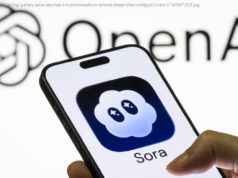If your teams juggle deadlines, resources, and deliverables, they need a dedicated project management service. We test and compare the top services that can help keep your teams on track.
Teams that have to handle multiple projects can’t rely on their memories to keep them all organized. And trying to keep everything together in email is a recipe for disaster. To deliver projects on time and within budget, information needs to be written down, deadlines plotted, and documents shared. Team members need to be in constant communication with one another. That’s the kind of information that quickly outgrows email threads and spreadsheets. When your team needs to get serious about managing projects, the solution is to get project management software.
Project management apps are online systems for both working and collaborating on projects. These real-time workspaces let team members and outside partners keep an eye on every detail that brings a project to fruition. They typically provide an overview of all the projects in the pipeline, as well as the nitty-gritty details about the daily work being done to move the projects forward. The very best ones help teams handle common problems, such as slipped deadlines, by automatically rescheduling tasks that are affected by it. They generate reports that give managers insight into which team members have too much (or too little) work on their plates. Many track time spent on projects and integrate with invoicing and billing systems.
The kind of work that benefits from a project management app typically takes more than a few weeks to complete, and there are many steps and people involved. Is selling a house a project? It very well could be.
Inside these apps, employees work together to break complex projects into component parts, namely milestones, tasks, and subtasks.
Every milestone, task, and subtask can be assigned to a specific person and given a deadline. Typically, all the other team members can see who is responsible for each task, whether that person is on track to complete it on time, and if there are any unanswered questions about the job.
Having visibility into every team member’s task list is useful for understanding whether people are falling behind because they’re overworked. When you can see that a colleague has six task assignments all due within the next 48 hours, it’s easy to spot the problem and redistribute the work before deadlines slip. By looking at a Gantt chart, for example, which are pretty common in project management apps, a manager would be able to see clearly when employees have too much work on their plates, or not enough. It helps everyone use their resources more effectively.
Projects usually have assets, too, which range from a detailed description of the project and its parts to a visual mock-up. People on the project team all need access to these assets, and the project management becomes the central place where they live.
Many project management solutions come with some amount of storage space so that your team can upload files right into the workspace, where everyone on the team can see them and discuss them. It’s also common for services to have an option to connect to online storage services, such as Box, Dropbox, Google Drive, or OneDrive, so that team members can link to or upload files to the project management system from the repositories they already use.
A few project management software systems have free versions, but they are generally quite limited. The primary limitation is usually the number of projects you can manage (think one or two) , although sometimes you might be restricted on space or prevented from using certain features.
Almost all project management apps have at a minimum a two-week free trial. When a free trial has a time limit on it, I don’t count it as having a free tier of service. To me, free means you get to use it forever with no charge.
While it’s helpful to try out software for free while you’re deciding whether to upgrade, most businesses, in the end, will want the features and space allotments that come with paid accounts. Still, it’s often helpful to try a product for an unlimited amount of time before deciding whether it’s right for you, your team, and the work you all do.
Which project management system has a free version? Zoho Projects, Teamwork Projects, Wrike, Volerro, and ProofHub all do. As you can see from the chart above, these free versions only allow you to manage one or two projects, except for Wrike. With Wrike, the limitations are that only five people can use the tool, you only get 2GB of space, and you don’t get proofing and approval tools.
Free trials often come with other limitations, as well. These are listed in the Price section of the complete reviews, which are linked below.
Collaboration software is a little different than project management software. While you do « collaborate » in a project management app, project management software is something much more specific.
Collaboration software comprises so many different kinds of apps and services that handle everything from video conference calls to letting two people type on a document at the same time.
Modern project management services often roll communication and collaboration tools right into them. Or they let you connect to the collaboration apps that your team already uses, such as Slack, HipChat, or even Google Docs.
Whether you use communications tools included in the project management application or connect to an outside one, the idea is that your team can log into one workspace and have at hand everything they need to get work done, including a prioritized to-do list, all the necessary assets, notes from other colleagues, a calendar of deadlines and milestones, and a place to ask questions and find answers. Some project management apps even offer billing and expense tools, too.
Because collaboration and communication are so important, one of my favorite project management features is a built-in chat app. Having a chat app doesn’t necessarily mean your team must use it, but it’s nice to have the option. Zoho Projects, Volerro, and Clarizen all offer an included chat app.
Task management software is slightly different from project management software. Project management apps will include task management features in them. But you can get standalone task management apps if that’s the only piece you really need.
One of the clearest example of a task management app is Asana. Asana is also sometimes called a workflow management tool. With Asana, you can have tasks assigned to specific individuals, and those tasks can have descriptions, deadlines, and attached documents, but they aren’t necessarily part of a larger project.
Another kind of workflow management software are kanban boards. Trello is one example. Kanban is also a style of working. It comes from Japan, and it was traditionally used in manufacturing for just-in-time delivery. These days, kanban apps are popular among software development teams. Kanban is particularly good at controlling how much new work a team takes on before the current batch of work in progress is complete. Some businesses do use kanban to manage projects, but kanban apps aren’t really project management apps.
Task-management apps work pretty well for ongoing work, the kind of work that generates task upon task with no end in sight. (Remember, projects have a start date, an end date, and a deliverable.) You can manage a project in Asana or Trello, but it takes a little more work on your part to do so. The best way to explain it is with an analogy.
Think of Asana or a kanban app as a deck of cards. Now think of a project management app as a board game. Board games come with rules, and the game is usually the most fun when you play it the way it was designed to be played.






